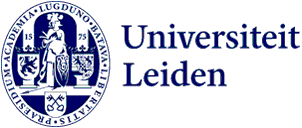
The Activating Podcast Method: engaging students with the help of blended learning
How can I get students to collaborate more and increase their engagement? That was the question that teacher, and winner of the 2022 Faculty Teaching Award, Astrid Van Weyenberg asked herself two years ago. Her solution? A method in which the use of podcasts ensures that students actively engage with the course material.
What did you make?
'I developed an Activating Podcast Method: initially for the first-year course Realism and Symbolism of the Film and Literary Studies programme, but with the potential to become cross-curricular.'
What was the reason?
‘During corona, I had the idea to create an activating podcast because I wanted to get students to collaborate more and increase student engagement. Over the past two years, this has developed into what I call the "Activating Podcast Method." The idea is that the podcasts not only transfer knowledge but also put students to work. Included in the podcast's narrative are assignments so that students practice important skills such as critical thinking, analyzing and reflecting. Students listen to the podcasts and complete the assignments before coming to the seminar: flipping the classroom, in other words. This way, students are well prepared and the teacher can use their work as a starting point for further exploration. That allows for more interesting conversations.'
How do you go about it?
'I created the podcast using the programme Audacity, with support from ECOLe. My student assistant Nathalie Muffels integrated the assignments into Brightspace using the programme FeedbackFruits. So-called "locks" ensure that a student first has to complete the assignment before they can continue listening. Supporting material is found in an accompanying workbook (through weekly pdfs). Students receive grades for the individual assignments in the podcast and also for the group assignments with which some of the podcasts end. As a final assignment, students make their own podcast, in which they can use a lot of creativity. They generally really enjoy this and it is a good exercise in science communication. It is an intensive way of learning, but the final exam is dropped.'
What is the advantage of this method?
'Not only students but also teachers can be more creative, for example by using audio clips from documentaries or inviting colleagues or students to collaborate on the podcast. Students are more active and better prepared during the seminars and are encouraged to be independent and self-reliant. As a teacher, you can tailor the seminars to the students' work, creating room for interesting conversations with more depth.'
What are points of attention for using podcasts in education?
‘The production of the podcast could be improved and the process is labour-intensive.’
What advice do you have for other teachers?
- Hearing the same voice can become monotonous, so create some variation, for example by adding sound clips and inviting other speakers.
- Creating podcasts takes time and energy, but if done right, podcasts can in principle be used for several years.
- Students found it difficult to find a moment each week to work on the group assignment at the same time. Something to pay attention to!
An instructional video on the Activating Podcast Method is in the making; more soon!
What was the setup of your course?
- Number of students: 72 at the beginning, after that about 55;
- Duration: 12 weeks with 1 to 2 podcasts per week, intermitted by 3 reading weeks;
- Online/hybrid: hybrid
What support did you have in developing this teaching method?
'We had help from student assistant Nathalie Muffels and Thomas Vorisek from ECOLe. We secured a grant from the Gratama Foundation / LUF to free up time to work on the project, purchase equipment for a podcast studio and for a student assistant.'
More best practices
Discover how your colleagues organise their lectures and check their tips on FGW Learning
Go to FGW Learning